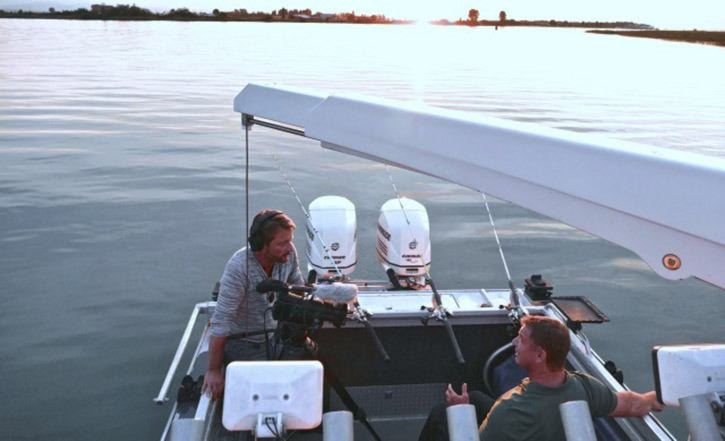Filmmaker Robert Moberg continues to be inspired to share the world around him through his art.
His documentary Bighorns at the Junction, filmed in the grasslands of the Chilcotin, mostly at Churn Creek and Farwell Canyon began as a film about why the sheep are disappearing at the junction, but also became a personal story about why we need the wilderness.
It was shown at a dozen film festivals and continues to be shown on CBC television.
At the end of May he learned it was also nominated for best environmental film with 2016 the Cay International Film Festival
“When its run is completed on CBC, there will be DVDs available and it might end up for sale through video on-demand,” Moberg said from his home on Chimney Lake.
His latest project — Giants Among Us - Rick Hansen and the Great White Sturgeon — is slated to be released in 2017.
The film tells the story of Hansen’s dedication to saving the White Sturgeon of B.C.’s Fraser River.
“It’s kind of a little known thing about him that he’s a real fishing fanatic,” Moberg said of Hansen. “We had some good interviews out on the Fraser River in Vancouver and were actually fishing right under the Alex Fraser Bridge and caught a seven-foot sturgeon right there.”
Sturgeon fishing is all catch and release with a very successful tip-tagging program for monitoring the population’s health that has been very successful, he added. As the largest freshwater fish in North America, White Sturgeon are also the longest living fish, enduring up to 150 years and can reach about 10 feet in length.
“Theoretically there could be sturgeon in the Fraser River that were here in 1867 that are still there when we release the film in 2017,” Moberg said. “That is a neat little tie in.”
Some of the footage for the film was shot west of Williams Lake at the mouth of the Fraser and Chilcotin Rivers.
Moberg went out in a helicopter with his nephew Kelly Croswell of Frontline Helicopters and they dropped into a gravel sandbar and caught five or six three-foot Sturgeon.
“I took a whole bunch of video and photographs and that will be in the film,” he said.
The film also explores the Canadian passion for fishing as a past-time and reverence for nature and the outdoors.
“Rick Hansen referred to fishing as a through-line in his life and it helped him through his own recovery,” Moberg added. “I thought that was really nice.”
He plans to film some more near Williams Lake and will return to the area they call the “heart of the Fraser,” between Hope and Mission.
Other people featured in the film include Mark Angelo, the founder of World Rivers Day and Rivershed Society of B.C.’s executive director MP Fin Donnelly, and people at the Nechacko White Sturgeon Conservation Centre hatchery.
“We are still looking for a few more people to interview,” Moberg said.
Moberg is also in the development stage of a short film titled The Way of the Hunter for the National Film Board of Canada.
It is about his life as a hunter when he was a child and a young adult and how he eventually became a non-hunter.
“My father hunted out of necessity on the farm we lived on near Rocky Mountain House in Alberta. The story is about being a non-hunter in resource towns like Williams Lake. It’s also about the Internet fanatics who wish death on the trophy hunters and a search for a better way.”
In his search for a better way, he finds Mike Willie — a First Nations cultural tour operator in the Great Bear Rainforest who talked a trophy hunter out of using his grizzly tag by telling him what the grizzly meant to his people and him.
“I use him as an example of someone who, instead of using the Internet, applies a face-to-face approach. Everybody is a hero on the internet and they can say all sorts of horrible things to people they will never see.”
These days Moberg lives in a modest cabin on Chimney Lake with his wife Vanessa who is originally from Newfoundland.
“We are happy here,” he said. “It is beautiful and we are always taking pictures and videos. I’ve even pitched a couple of short film ideas about living a simple life on Chimney Lake.”
They kayak, mountain bike, walk and try to enjoy the simple things, he added.
Moberg moved to Williams Lake as a kid with his family in 1973 and stayed until his early 20s. He moved away, lived in big cities, and finally after many years found his way back.
“I have no plans on leaving,” he said. “It’s a nice little best kept secret. What I like about it is it’s unchanged. If you drive from here to Bella Coola it looks so close to the way it did in 1980. The landscape is spectacular.”
